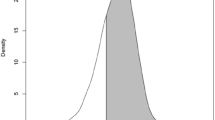Abstract
Field studies (n = 6) were completed on evaluation of activity of ivermectin (200 μg/kg) paste formulation against small strongyles in horses (foals, yearlings, and older animals) on a farm (Farm MC) in Central Kentucky in late 2006 and during 2007. A girth tape was used to estimate body weights which were then used to calculate the proper dose rate of ivermectin. The foals, yearlings, and some of the older horses were born and raised on the farm. However, most of the older horses which were not raised on the farm had been there for several years. The horse herd was given ivermectin exclusively, usually four times a year, since 1990. An exception was that during the foal’s period of life fenbendazole, pyrantel pamoate, and oxibendazole were given occasionally besides ivermectin. Efficacy of drug activity was determined by pretreatment and posttreatment counts of strongyle eggs per gram of feces (EPGs). Culture of strongyle eggs in feces from some of the horses showed that only small strongyle larvae were present. The research included two studies (A and B) in foals (n = 24) and four studies (C, D, E, and F) in yearlings (n = 13) alone or with older horses (n = 10). For each of the studies (B through F), there was a treated and a nontreated group. These groups were switched for each treatment, i.e., the treated group in one study was the nontreated group in the next study and vice versa. Eggs per gram of feces counts were determined at 1- or 2-week posttreatment intervals for 4 weeks for study A and 6 weeks for studies B through F. Also, for studies B, E, and F, counts of EPGs were done either two or three times during the third week posttreatment. The studies showed a similar posttreatment pattern of strongyle EPG counts beginning to return at about 4 weeks and increasing at 5 and 6 weeks posttreatment. Two horses in study E and one in study F had low EPG values toward the end of the third week posttreatment. The results of this ivermectin investigation showed that the strongyle EPG counts started returning about twice as quickly post-ivermectin-treatment of horses than when the drug was first marketed in the early 1980s.
Similar content being viewed by others
References
Boersema JH, Eysker M, Maas J, van der Aar WM (1996) Comparison of the reappearance of strongyle eggs on foals, yearlings and adult horses after treatment with ivermectin or pyrantel. Vet Q 18:7–9
Conway DP (1964) Variance in the effectiveness of thiabendazole against Haemonchus contortus in sheep. Am J Vet Res 25:106–107
Drudge JH, Elam GW (1961) Preliminary observations on the resistance of horse strongyles to phenothiazine. J Parasitol 47(suppl):38–39
Drudge JH, Lyons ET (1965) Newer developments in helminth control and Strongylus vulgaris research. In: Proc 11th Ann Mtg AAEP, Miami Beach, FL, pp 381–389
Drudge JH, Wyant ZN, Elam GW (1953) Continuous phenothiazine therapy for horses. Vet Med 48:306–310
Drudge JH, Leland SE Jr, Wyant ZN, Elam GW (1954) Observations on the effectiveness of phenothiazine in the control of gastro-intestinal nematodes of sheep. In: (Abst) 67th Ann Rep Direct Ky Agric Exp Sta, 56
Drudge JH, Leland SE Jr, Wyant ZN (1957) Strain variation in the response of sheep nematodes to the action of phenothiazine. I. Studies of mixed infections in experimental animals. Am J Vet Res 18:133–141
Drudge JH, Szanto J, Wyant ZN, Elam G (1963) Critical tests of thiabendazole as an anthelmintic in the horse. Am J Vet Res 24:1217–1222
Drudge JH, Szanto J, Wyant ZN (1964) Field studies on parasite control in sheep: comparison of thiabendazole, ruelene, and phenothiazine. Am J Vet Res 25:1512–1518
Gibson TE (1960) Some experiences with small daily doses of phenothiazine as a means of control of strongylid worms in the horse. Vet Rec 72:37–41
Lind EO, Kuzimina T, Uggla A, Waller PJ, Hoglund J (2007) A field study on the effect of some anthelmintics on cyathostomins of horses in Sweden. Vet Res Com 31:53–65
Little D, Flowers JR, Hammerberg BH, Gardner SY (2003) Management of drug-resistant cyathostominosis on a breeding farm in central North Carolina. Eq Vet J 35:246–251
Lyons ET, Drudge JH, Tolliver SC, Granstrom DE, Stamper S (1992) Evaluation of exclusive use of ivermectin vs alternation of antiparasitic compounds for control of internal parasites of horses. Am J Vet Res 53:97–104
Lyons ET, Tolliver SC, Drudge JH (1999) Historical perspective of cyathostomes: prevalence, treatment and control programs. Vet Parasitol 85:97–112
Poynter D, Hughes DL (1958) Phenothiazine and piperazine, an efficient anthelmintic mixture for horses. Vet Rec 70:1183–1188
Samson-Himmelstjerna G, von Fritzen B, Demeler J, Schürmann S, Rohn K, Schneider T, Epe C (2007) Cases of reduced cyathostomin egg-reappearance period and failure of Parascaris equorum egg count reduction following ivermectin treatment as well as survey on pyrantel efficacy on German horse farms. Vet Parasitol 144:74–78
Trawford AF, Burden F, Hodgkinson JE (2005) Suspected moxidectin resistance in cyathostomes in two donkey herds at the Donkey Sanctuary, UK. In: Proc 20th Int Conf World Assoc Adv Vet Parasitol, Christ Church, NZ
Acknowledgments
This investigation (Paper No. 08-14-004) was made in connection with a project of the University of Kentucky Agricultural Experiment Station and is published with the approval of the director.
Author information
Authors and Affiliations
Corresponding author
Rights and permissions
About this article
Cite this article
Lyons, E.T., Tolliver, S.C., Ionita, M. et al. Field studies indicating reduced activity of ivermectin on small strongyles in horses on a farm in Central Kentucky. Parasitol Res 103, 209–215 (2008). https://doi.org/10.1007/s00436-008-0959-7
Received:
Accepted:
Published:
Issue Date:
DOI: https://doi.org/10.1007/s00436-008-0959-7




